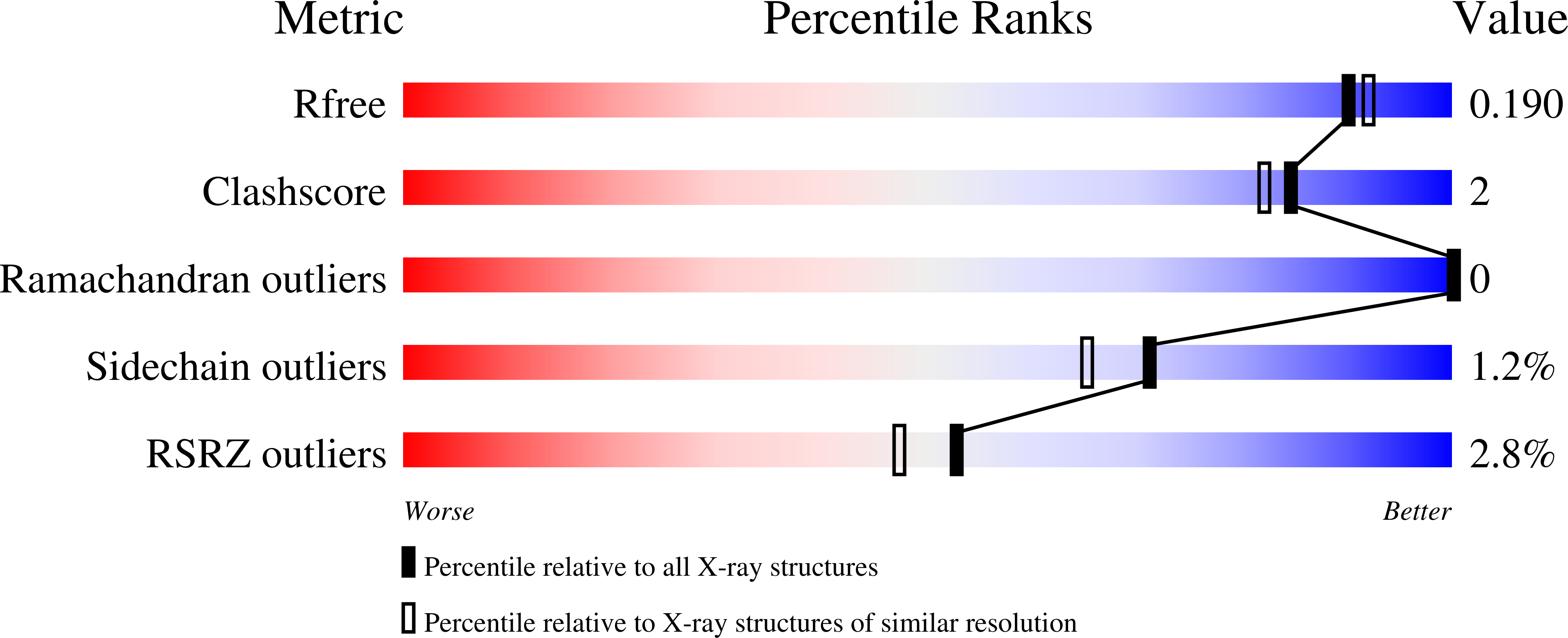Crystal structure of bacterial cytotoxic necrotizing factor CNF Y reveals molecular building blocks for intoxication.
Chaoprasid, P., Lukat, P., Muhlen, S., Heidler, T., Gazdag, E.M., Dong, S., Bi, W., Ruter, C., Kirchenwitz, M., Steffen, A., Jansch, L., Stradal, T.E.B., Dersch, P., Blankenfeldt, W.(2021) EMBO J 40: e105202-e105202
- PubMed: 33410511
- DOI: https://doi.org/10.15252/embj.2020105202
- Primary Citation of Related Structures:
6YHK, 6YHL, 6YHM, 6YHN - PubMed Abstract:
Cytotoxic necrotizing factors (CNFs) are bacterial single-chain exotoxins that modulate cytokinetic/oncogenic and inflammatory processes through activation of host cell Rho GTPases. To achieve this, they are secreted, bind surface receptors to induce endocytosis and translocate a catalytic unit into the cytosol to intoxicate host cells. A three-dimensional structure that provides insight into the underlying mechanisms is still lacking. Here, we determined the crystal structure of full-length Yersinia pseudotuberculosis CNF Y . CNF Y consists of five domains (D1-D5), and by integrating structural and functional data, we demonstrate that D1-3 act as export and translocation module for the catalytic unit (D4-5) and for a fused β-lactamase reporter protein. We further found that D4, which possesses structural similarity to ADP-ribosyl transferases, but had no equivalent catalytic activity, changed its position to interact extensively with D5 in the crystal structure of the free D4-5 fragment. This liberates D5 from a semi-blocked conformation in full-length CNF Y , leading to higher deamidation activity. Finally, we identify CNF translocation modules in several uncharacterized fusion proteins, which suggests their usability as a broad-specificity protein delivery tool.
Organizational Affiliation:
Institute of Infectiology, Center for Molecular Biology of Inflammation (ZMBE), University of Münster, Münster, Germany.




















